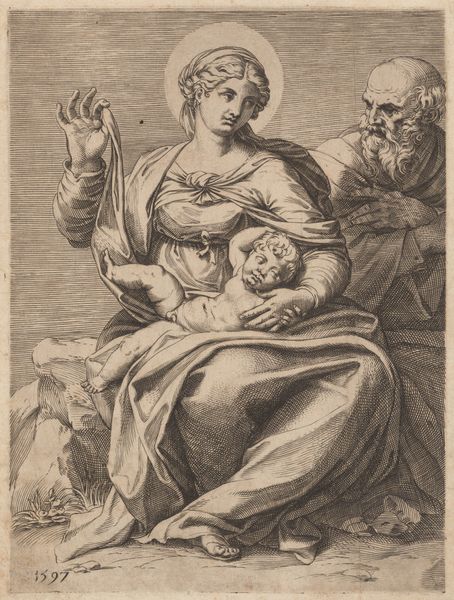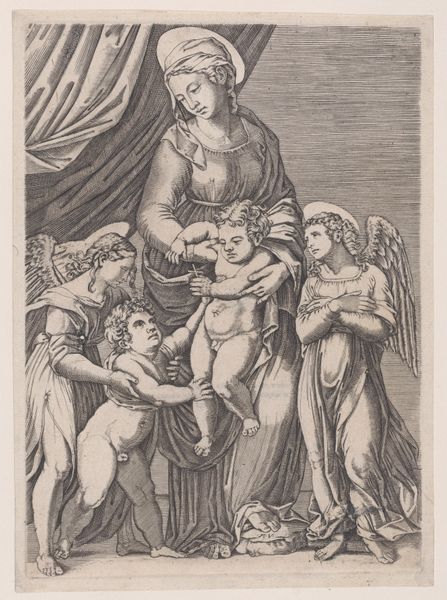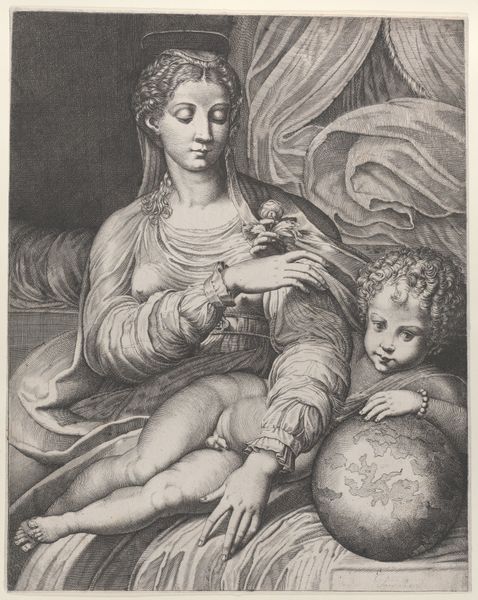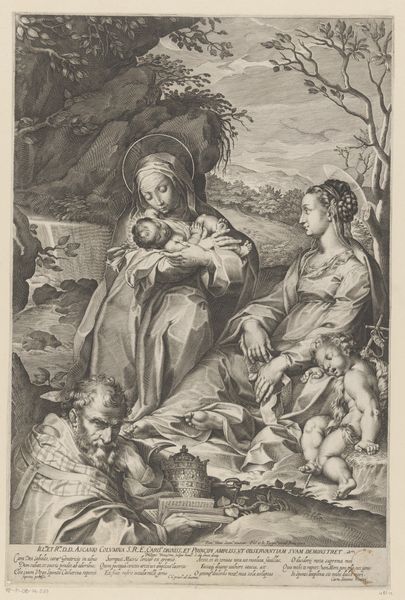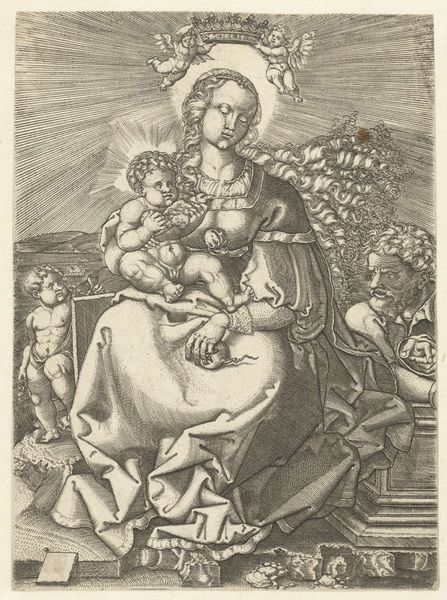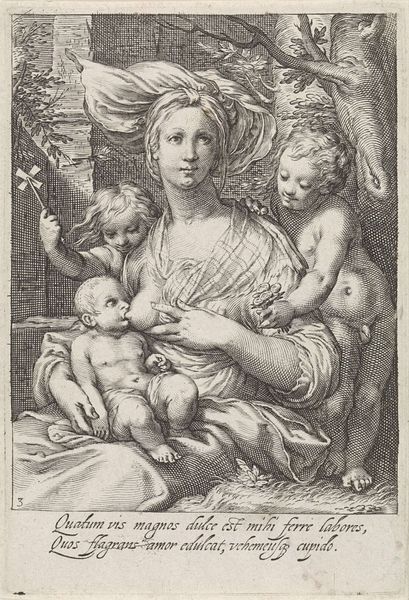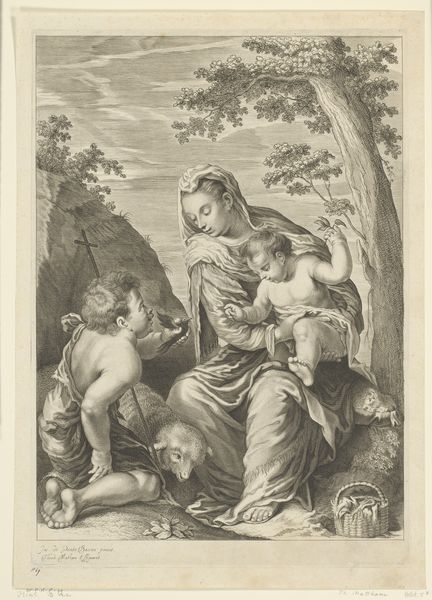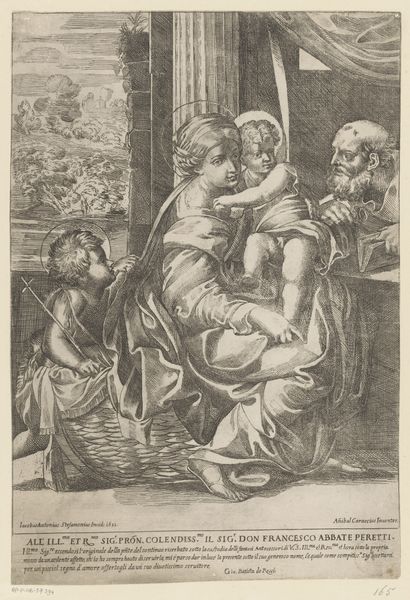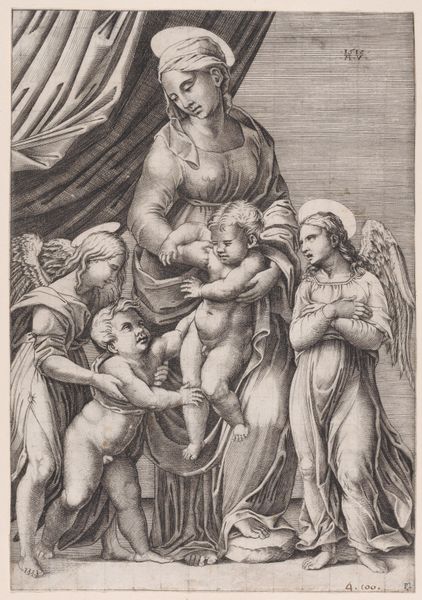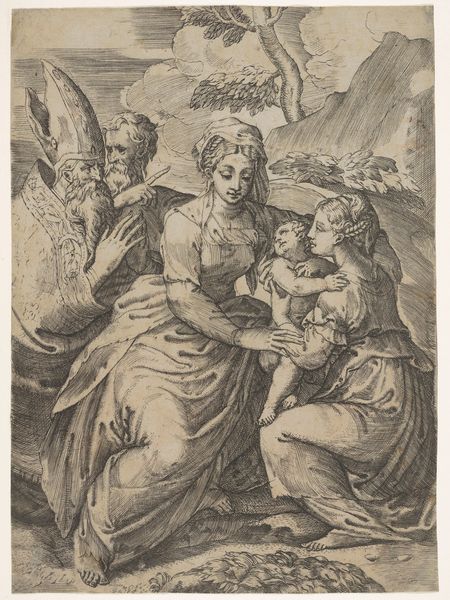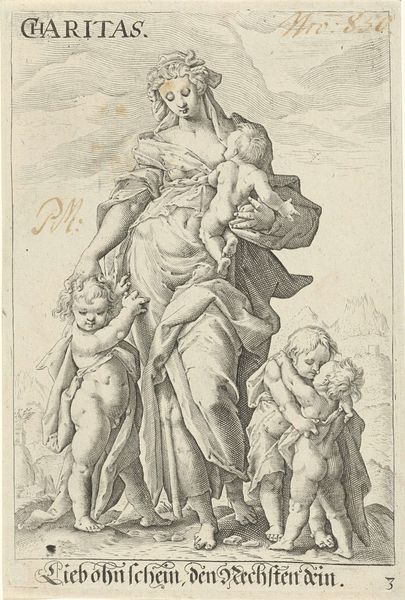
drawing, print, ink, engraving
#
portrait
#
drawing
#
ink drawing
# print
#
pen illustration
#
pen sketch
#
pencil sketch
#
figuration
#
11_renaissance
#
ink
#
ink drawing experimentation
#
pen-ink sketch
#
surrealism
#
northern-renaissance
#
engraving
#
pencil art
Dimensions: height 415 mm, width 340 mm
Copyright: Rijks Museum: Open Domain
Curator: Here we have "Maria met Christus en Johannes de Doper als kind," made around 1610 by Bartholomeus Willemsz. Dolendo. It's currently held at the Rijksmuseum. Editor: Immediately, I'm struck by the stillness. The figures, especially Mary, seem very composed. And the intense detail achieved in what looks like an engraving or similar printmaking technique is really captivating. Curator: Absolutely. The engraving technique, with its fine lines, really allows for subtle gradations in tone. The composition places Mary centrally, linking directly to the religious symbolism and the tradition of depicting the Madonna and Child. We see the young Christ child clinging to her, while John the Baptist, identifiable by his cross, stands to the side. Editor: The folds in her clothing look particularly time-consuming to render and make it seem like a Northern Renaissance aesthetic at play. Considering the laborious printmaking process, I wonder about the intended audience. Was this intended for mass distribution, bringing religious imagery to a wider populace? Curator: It's highly likely, yes. Prints were crucial for disseminating images and ideas at the time, so a piece like this would allow individuals to engage with religious themes in a more personal way. The specific symbolism with Mary, Jesus, and John connect to ideas of maternal love, sacrifice, and of course, salvation. There's a rich psychological component at play when viewers contemplate figures with that symbolic resonance. Editor: You mentioned sacrifice, and I wonder how much the process of engraving itself became a form of devotional labor. The painstaking hours spent carving those lines into a metal plate mirrors, in a way, the suffering and commitment inherent in the religious narrative. Curator: That's an astute observation. The act of creating becomes intertwined with the very meaning being conveyed, further deepening the work's impact. Editor: This piece, when you think about it, isn’t simply a religious work of art, it becomes evidence of production of material culture in that specific era and helps provide historical understanding. Curator: Precisely! A fusion of artistic practice and belief, accessible through the enduring power of images and symbols. Editor: And so, through form and image, these etchings keep these questions and contemplations alive today.
Comments
No comments
Be the first to comment and join the conversation on the ultimate creative platform.
